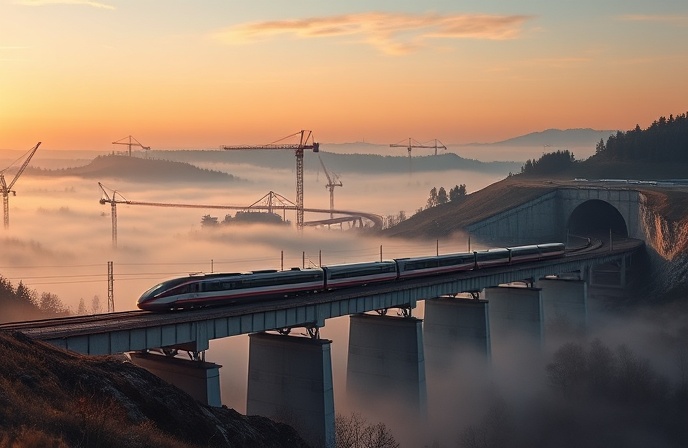NZ Rail Electrification: Papakura to Pukekohe Upgrade

This article explores the significant advancements in New Zealand’s rail infrastructure, specifically focusing on KiwiRail’s electrification project extending the electric rail network from Papakura to Pukekohe in South Auckland. This expansion represents a crucial step towards modernizing the country’s rail system, enhancing its efficiency, and contributing to broader national sustainability goals. The project’s approval, secured under the expedited Covid-19 Recovery (Fast-track Consenting) Act 2020, highlights the government’s commitment to infrastructure development and economic stimulus. We will examine the project’s scope, the benefits it promises, the challenges involved in its implementation, and its potential impact on both commuters and the wider New Zealand economy. The analysis will also incorporate a discussion of broader Auckland Metro Programme initiatives, showcasing a wider strategic vision for rail development within the Auckland region and its contribution to the overall NZ Upgrade Programme.
Fast-Track Approval and Project Scope
KiwiRail’s electrification project between Papakura and Pukekohe received resource consent approval under New Zealand’s Covid-19 Recovery (Fast-track Consenting) Act 2020. This accelerated consenting process enabled the project to progress swiftly, minimizing delays and contributing to economic recovery efforts. The project encompasses a significant upgrade of the 19km rail line, including the installation of overhead line equipment (OLE), new masts, signaling system improvements, and upgrades to five level crossings. This comprehensive approach not only electrifies the line but also enhances overall safety and efficiency. The streamlined consenting process involved direct engagement with Mana Whenua (local Māori authorities), stakeholders, and residents, demonstrating a commitment to community involvement and minimizing potential disruptions.
Benefits of Electrification and the Auckland Metro Programme
The electrification of the Papakura-Pukekohe line will bring several key benefits. Electric trains are inherently cleaner and quieter than diesel locomotives, significantly reducing carbon emissions and noise pollution. Faster journey times are also anticipated, making rail travel a more attractive and competitive option for commuters and enhancing the overall efficiency of the rail network. This project aligns perfectly with the government’s wider NZ Upgrade Programme focused on reducing carbon emissions. The broader Auckland Metro Programme, with its NZ$1.5 billion (approximately US$1.05 billion) investment, encompasses a series of upgrades throughout the Auckland rail network, including the construction of three new train stations along the Papakura-Pukekohe line, and the crucial development of a third main line to effectively separate freight and passenger services. This separation significantly increases network capacity, maximizing the benefits of the City Rail Link (CRL) and enabling more efficient movement of both freight and passengers.
Challenges and Mitigation Strategies
Large-scale infrastructure projects inevitably present challenges. The Papakura-Pukekohe electrification is no exception. Managing disruption to existing services during construction will be a priority. KiwiRail, in collaboration with Auckland Transport (AT), is committed to minimizing disruption and keeping the public informed throughout the process. This requires careful planning, effective communication, and a proactive approach to stakeholder management. The project’s success also depends on the timely delivery of materials and the efficient coordination of various contractors. Rigorous project management, coupled with contingency planning, will be essential to mitigate potential delays.
Hillside Workshop Redevelopment and Future Implications
The concurrent redevelopment of KiwiRail’s Hillside railway workshop further underscores the company’s commitment to modernizing its operations. This investment in maintenance and repair facilities will enhance the long-term sustainability of the upgraded rail network, ensuring the efficient operation and maintenance of both electric and diesel rolling stock. The combined investments in the Papakura-Pukekohe electrification and the Hillside workshop directly support the broader economic objectives of the NZ Upgrade Programme, creating jobs and stimulating economic activity across various sectors. This represents a significant step towards a more sustainable and efficient national rail system, paving the way for future expansion and modernization initiatives.
Conclusions
The electrification of the Papakura-Pukekohe rail line, a key component of KiwiRail’s Auckland Metro Programme, represents a significant milestone in New Zealand’s rail infrastructure development. The project’s fast-track approval under the Covid-19 Recovery Act demonstrates the government’s commitment to accelerating essential infrastructure projects. The project’s anticipated benefits, including reduced carbon emissions, quieter and faster journeys, and increased network capacity, align perfectly with national sustainability goals and the demands of a growing population. While challenges related to managing disruption and coordinating complex construction activities exist, KiwiRail’s commitment to community engagement and proactive communication strategies will be crucial in mitigating potential negative impacts. The concurrent investment in the Hillside railway workshop underscores a holistic approach to infrastructure modernization, ensuring long-term operational efficiency. The project’s success will not only significantly improve rail services in the Auckland region but will also serve as a model for future rail upgrades nationwide, contributing substantially to New Zealand’s economic growth and environmental sustainability. The projected completion date of 2024 marks a significant step towards a more modern, efficient, and environmentally responsible national rail network, effectively supporting the government’s broader transportation and sustainability agenda.

